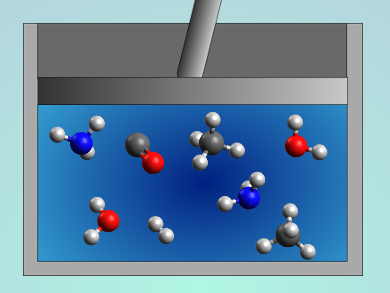Finding chemically interesting reaction pathways in a complex system is a challenge for both theory and experiment. Such systems, like the mixture used in the classic Urey-Miller experiment simulating the atmosphere of early earth, have huge numbers of possible states.
Todd J. Martinez and his group at Stanford University, CA, USA, have developed an ab initio nanoreactor inspired by experimental conditions. They use ab initio molecular dynamics (AIMD), a usually time-intensive method which has previously been used for specific reactions of interest. They enhanced reactivity in the studied system by pushing the molecules together periodically with a virtual piston. This increases the number of high-energy collisions and allows more reactions to be simulated. The simulations used an approximate Hartree-Fock (HF) ansatz, augmented by more precise DFT calculations on the discovered pathways.
To test their approach, the researchers simulated two different systems: a homogenous collection of acetylene molecules, and a virtual equivalent of the classic Urey-Miller experiment using hydrogen, ammonia, methane, carbon monoxide, and water. They were able to use a large number of initial molecules (50–100) and thus sample a large reaction space. For both systems, they found a complex web of reactions with feasible activation barriers, including pathways that had not been previously characterized. The acetylene system shows a surprising diversity of products, with almost 100 different species being formed during the simulation time. The Urey-Miller-type system exhibits an extremely complex web of reactions leading to many small reaction products, among them the amino acid glycine and urea. Focusing on one molecule, one can then find the collection of possible reactions leading to it.
The ab initio nanoreactor can help to find reactions unlikely to be discovered with traditional methods, and could improve understanding of reactivity in complex systems, providing novel hypotheses for reaction pathways and elementary steps.
- Discovering chemistry with an ab initio nanoreactor,
Lee-Ping Wang, Alexey Titov, Robert McGibbon, Fang Liu, Vijay S. Pande, Todd J. Martínez,
Nat. Chem. 2014.
DOI: 10.1038/nchem.2099



